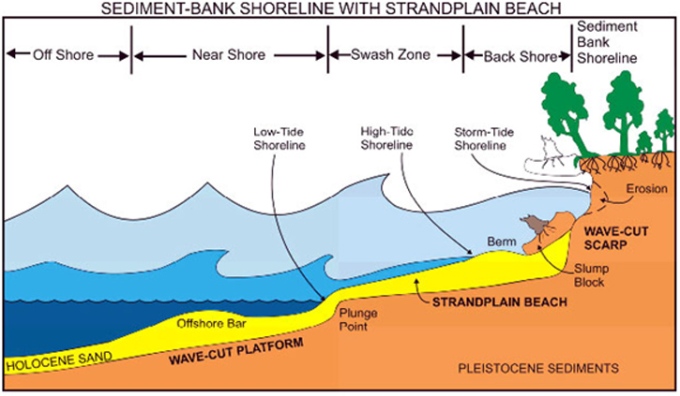Home » Environmental Priorities » Climate Change »
Shifting weather patterns along the Irish coastline have been compounding the issue of coastal erosion recently. Although storm frequency has decreased in the last few decades, the intensity of winter storms has been rapidly increasing (Sweeney et al., 2003). These storms not only erode the coastline, but cost millions in structural damage, flooding, and loss of fishing vessels and equipment, to name but a few. Erosion of the Irish coastline, particularly the South West, is further aggravated by positive trends in the North Atlantic Oscillation which has led to an increase in wave height of 0.8m every ten years (Woolf et al., 2002). Of the 7,800km coastline 1,500km are deemed to be “at risk” from coastal erosion, with a further 490km being in “immediate danger” (DELG, 2001).

Areas such as Bantry Bay and Dunmanus Bay have been noted to be areas of particular concern (Devoy, 2008). Current estimates state that the rate of erosion for the Irish coast is between 0.2m and 1.6m per annum (DELG, 2001), with sand dunes and soft cliffs being the worst affected. Soil type, as well as storm intensity and wave height, play a huge part in the level of erosion, as does the presence of lose rock and stone within the water (Summerfield, 1991). Through attrition and wave action, sandy areas like Castlefreke or Long Strand can lose up to 10m of dune in a single storm event. However, sandy areas are usually only damaged in the short-term, as accretion can allow for soft sediments to be replenished; rocky, hard soil areas are where the long term effects of coastal erosion can be seen more obviously (Thom and Hall, 1991).

With the realisation of the threat coastal erosion is posing to Irish people and the economy, several preventative measures have been put into place. These measures can be divided into two categories: hard and soft. An example of a hard measure is the construction of sea walls and/or groins, such as those found in Rosscarbery. Sea walls act as a physically resistant barrier to wave and storm action, and can greatly reduce the threat to coastal areas. Currently, no less than 350km of Irish coastline are protected by artificial sea walls (Devoy, 2003). The draw backs of sea walls, is that they are expensive to build and are usually only put in places where the cost of construction is less than that of any potential property damage or losses. Sea walls can also cause more long-term issues, such as the reduction of accretion in other coastal areas by depriving them of sediments that would previously have been products of erosion. Soft measures include methods like “beach replenishment”, where sand and sediments are transported from off shore and added to beaches post erosion events. Although highly uncommon in Ireland, it has had increasing emphasis placed upon it as a way of restoring lost beaches. The Irish government have invested €44 million to address the growing issue of coastal erosion as part of the National Development Plan 2000-2006. With this funding, erosion can be dealt with in a manner that is beneficial to humans as well as the environment.

